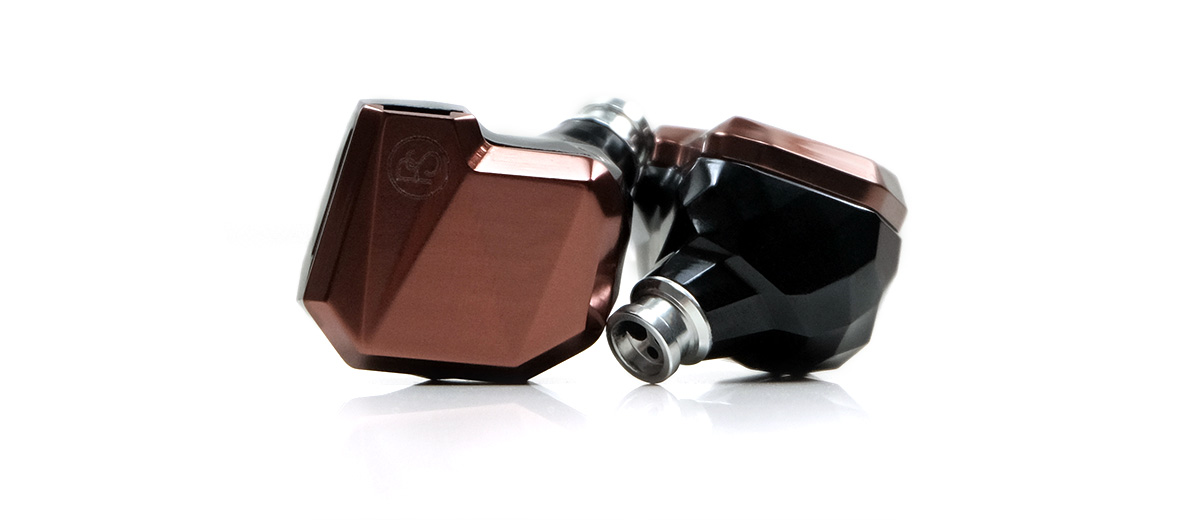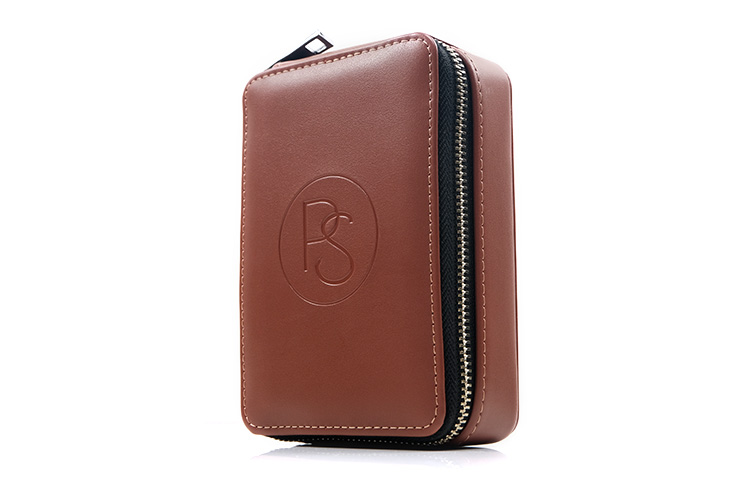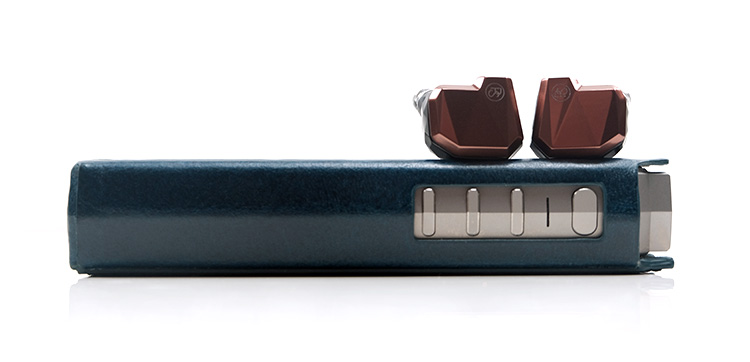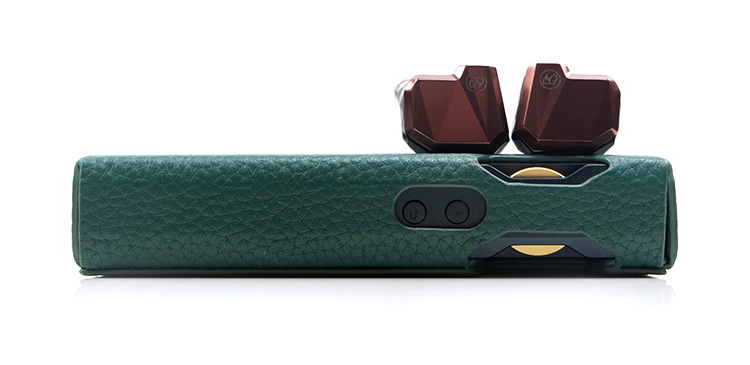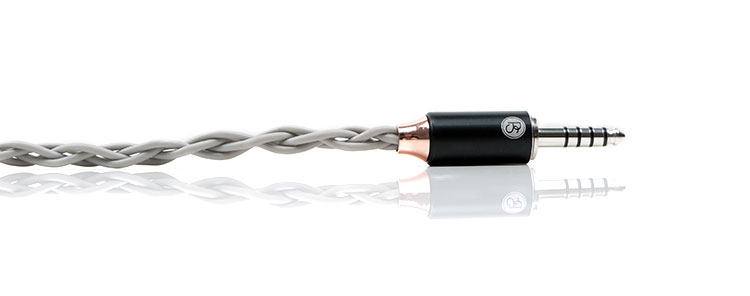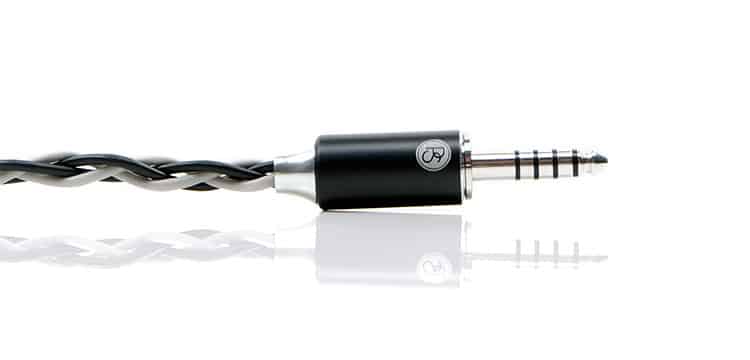Sound Impressions
Summary
The PLUSSOUND Allegro is a lot more mature sounding than I was expecting and has enough about it to give the current top-tier hybrid monitors a run for their money.
Overall, it veers slightly to the warm side in part with the Copper+ cable, more so on the lows with a good vocal presence and a sparkling treble counter that does not push down too hard on those BA mids.
It does sound relatively light and nimble on its feet through the mids but the tone is somewhat fluid as the tips can change the final sound signature with the foams producing the more natural smooth coloration and the silicone or Symbio tips giving it a cleaner presentation more typical of a BA arrangement.
The note weight and texture of the lows are all dynamic, no mistaking that but it’s not as sub-bass biased as something like the Viking Ragnar or the Empire Ear’s Odin. It is a little bit more neutral relative to its mid-bass punch with a shallower upper bass scoop which is where that low-end warmth is drawn from.
The tuning balance is excellent on the Allegro if you are looking for a general performance that sounds great with a wide range of genres. It also has just the right amount of weight on the lows countered by a much better-than-expected vocal and instrumental clarity through the mids to work really well with classic rock and metal.
It is relatively efficient, more so than 1st gen EST hybrids from a few years back. Low again combined with a balanced output from DAPs such as the N8ii and the M17 drive the Allegro really well. My vote is the N8ii simply because it sweetened the treble beautifully without losing that essential sparkle.
Tweaking
The clarity goes up a notch when you switch to PLUSSOUND other cables, the Silver+ and my personal favorite pairing, the Hybrid+. Of the three cables PLUSSOUND offers, the Copper+ is the smoothest and most relaxed of the three. You can read how each cable sounds in more detail further down on this page.
Frequency Response
The Allegro generally follows a classic “W-shaped” response though the sub-bass rise is more linear with the mid-bass punch from 20Hz up to 70Hz so you get an equal quantity of both rather than a huge rumble and less punch.
From 80-100Hz it is a slow dive into the lower mids and less scooped when compared to our selected comparison models on page 3 of this review. Slightly less bass to mids separation from those models, especially with the Copper+ wire but better warmth and lower mids presence so instruments hold their own a bit better, hence that nod to its genre flexibility.
From 1-3k you get a natural level of pinna gain, vocals do come through clearly on the Allegro but are marginally thinner in weight than some of the high-end competition. More so with the silicone and Symbio tips. My preference is with the foams which gave a more natural level of note thickness.
One thing to note, this is not a shouty tuning, that 1-3k bump is just enough but not overcooked so it has no fatigue. What you do get though is a little overtone from the upper treble that can be picked up when higher-pitching percussion gets very energetic.
The upper treble is where the Allegro is stronger with some good headroom. More so with the Hybrid+ and the Silver+ cables that tease out some excellent airy highs.
The 3-5k range is dipped which I find quite normal for configurations like this, usually to take any potential sting from treble bearing down on the mids.
Timbre
There is a definite mix of driver timbre in Allegro’s make-up and one that can stretch and change slightly with cable choice and more aggressively with tip choice. Mixing and matching are advised.
Now when I first tried the Allegro I was aiming to get a good comfortable seal and found the silicone tips to offer the best balance.
However, what I found was a little too much contrast on the mids and treble, which might seem a nice counter to the warmer dynamic driver but it in doing so it presented a relatively thin note weight though the same range.
It is not an overly bright tone, I have to emphasize that but rather just lacks a bit of girth giving it more of a brittle sound for percussion and vocal performances than I would have liked.
Once you switch to foams, however, the balance with the Allegro combined with the Copper+ cable sounds at its most natural. There is a much-improved coherence with the dynamic driver texture and the tasteful lower mids warmth.
In fact, at times I felt the Allegro veered more to the euphonic side for some rock vocal performances but never what you would describe as lush or smoothed over. There is enough treble sparkle to keep the bite and definition healthy.
Note weight is excellent on the low end. It’s not a high-contrast timbre from the bass through to the mids but you can tighten up the attack and decay considerably if you switch back to the silicone tips or upgrade to the Silver+ and Hybrid+ cables. The Copper+ keeps the tone a little softer and more relaxed when combined with the foam tips.
Staging & Dynamics
The Allegro has some pleasing depth, with a relatively forward midrange and a lot of energy in the upper treble creating a perception of good depth and excellent height.
It’s not as airy or as grandiose in its imaging placement as something like the Viking Ragnar, it’s a bit more rounded than that but it does extremely well with instrumental placement and clarity, Particularly so in the lower-mids which manage to keep the presentation relatively powerful and clear from congestion at the same time.
The fundamental is satisfying but it’s pulling more from a mid-bass punchiness than absolute rumble. Some flagships place a stronger 20-50Hz focus and drop the mid-bass presence creating a stronger bass-to-midrange separation.
That will create more outright power when called upon but less meat on the bone when things get a little quieter with a resulting weaker image and dynamics from instruments that struggle to be heard from a wall of vocals.
The Allegro avoids that, making it ideal for a lot of those chugging mid-tempo hard rock and thrash chord routines that need a bit of clarity combined with decent power to shine.
My final tip is the cable matching if you opt for the smother-sounding foam tips. The Hybrid+ combined with something like the N8ii or the FiiO M17 provides a lot of enhanced midrange clarity over the Copper+ but delivers the most dynamic bass extension.
The Silver+ is the most neutral in terms of weight and warmth so it takes a little away from the Allegro’s dynamic driver sub-bass power but enhances the quality of the mid-bass punch as well as opens up the mids a bit more.
Synergy
Efficiency
The PLUSSOUND Allegro is rated at a fairly low 10Ω for impedance and a pleasingly efficient 112 dB @1kHz SPL, at least on paper.
I say that last part as a caveat because plenty of times I have reviewed EST driver hybrids with decent ratings only to find they are a lot more power-hungry than you would think. Primarily, I believe that it is due to the additional power required to get that energizer morning which sends current to the EST drivers.
I am presuming these are gen 2 EST drivers which was a soft launch with a more efficient energizer a few years back so it’s not as demanding as the original EST hybrids from 2019.
Compared to some other EST hybrids it’s not too far off the pace efficiency-wise either. Using a Cayin N8ii balanced output in P+ mode, it’s on par with the 17Ω impedance and 112 dB @1kHz rated Noble Audio Viking Ragnar in terms of volume matching.
If you are coming from the Empire Ears Odin, which is rated at just 3Ω and 103 dB @1kHz, the Allegro is actually a little less sensitive but not by a huge amount on the N8ii and RS8 balanced outputs in low gain. Perhaps by around 2-3 steps.
Lime Ear’s Anima, which is just a shade over for impedance at 16Ω and supposedly more sensitive at 116 dB @1kHz was surprisingly more muted at similar volume levels to the Allegro. However, again not by a huge amount, just a few steps will get them volume-matched.
Noise Control
Background noise and hiss are not an issue with the Allegro. It is easy enough to drive out of a decent DAP or portable amp in low gain balanced mode but is not too sensitive to expose high gain noise floors on older amps.
The Allegro can flex its muscles a bit also with a decent amp output. I was rolling an old Cypher Labs Picollo discrete-engineered single-ended portable amp via a 3.5 lineout from the RS8 last weekend and it sounded very vivid and juicy. Much more so when compared to the RS8 direct 4.4mm output which surprised me a lot.
Pairings
I tested 4 DAPs with the PLUSSOUND Allegro including the Cayin N8ii, HiBy’s RS8, the L&P P6 Pro, and FiiO’s M17. All of them drove the Allegro in low gain balanced output without any issues but I did develop some strong preferences for two of them because of the amount of energy and vibrancy they brought to the Allegro pairing.
Cayin N8ii & FiiO M17
If there is one thing the Allegro likes and that is a pairing that can tease out some staging width, vocal presence, and a clear treble extension without sounding too harsh. Of the 4 DAPs tested, it was the Cayin N8ii, closely followed by the M17 that delivered almost all of those preferences.
Where they differ is in the Allegro upper mids and treble timbre which came across as a little harder sounding on the M17 compared to the sweeter tone of the N8ii.
I actually preferred the slam and dynamic of the M17 low end but the mids through to the treble performance of the N8ii was sweet-sounding which made a difference for heavy rock guitar and percussion dominant performances. The M17 treble was a little less natural sounding in comparison.
Both did offer excellent clarity and space through the mids which is a must for me with the Allegro having an elevated mid-bass and a slightly warmer lower-mids with the Copper+ wiring.
HiBy RS8 + LP P6 Pro
The HiBy RS8 sounded a bit too neutral for me, even in Turbo mode. I suspect this is primarily reflected in the vocal imaging which is not as forward sounding as the M17 and N8ii with the Allegro.
The RS8 is more resolving and natural in tone than the M17 and will suit quieter genres or deft subtle passages of music that require a very strong dynamic range and an accurate timbre at that. However, for rock, it didn’t quite grab me as much as the first two sources.
The P6 Pro is a little too relaxed on the highs and perhaps too intimate in general. This comes more to the fore when you use the Comply foam tips and does work much better with the stock silicone tips which produce a brighter performance.
However, the vocal delivery from the P6 Pro was very satisfying on the Allegro sounding life-like with an altogether ‘fleshier’ quality to note texture compared to the other DAPs.
Cable Rolling
(Note all testing was done with the HiBy RS8 DAP as the main source using a balanced 4.4mm low gain output and Turbo Mode).
It would not be a PLUSSOUND review without some discussion on the performance of the rest of the ‘Plus” range cables that they offer. Especially given the low impedance value of the Allegro combined with the differences we found in our previous reviews of the Silver+ and the Hybrid+ cables.
Silver+ Performance
The Silver+ pairing brings a much higher degree of clarity through the Allegro Mids and with some increased presence in the highs and a slight dip in the low-end warmth also.
Now, those highs are not harsh, if anything I am more impressed by the mids-to-high performance of the Allegro than when it is paired with the Copper+. It is much clear in both imaging and instrumental/vocal separation from that 1-3k dip onwards and that sparkling treble will put a bit more shine on the notes along with it.
That will give a stronger impression of space and enhanced stereo imaging long the X-Axis from the Allegro’s staging qualities. As for the low end, there is less meat on the bone but you do get an improved level of layering and dynamics producing a tighter sound with some pleasing enhanced mid-bass definition.
Hybrid+ Performance
This is a fantastic pairing. It takes the midrange clarity of the Silver+ and mixes it with the heft and body of the Copper+ low end to give the Allegro a real kick up the proverbial backside.
This pairing offers a more aggressive mid-bass punch than the Copper+ but for the first time, I also hear an uptick in the sub-bass presence also so the instrumental fundamental is improved at the same time.
The vocals are cleaner, the treble has more sparkle. It’s an altogether more vivid performance and probably the combination I would pick out of all three cable choices.

